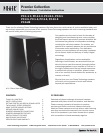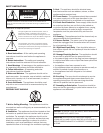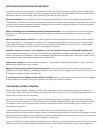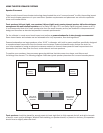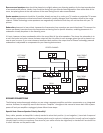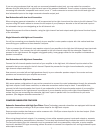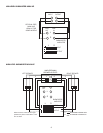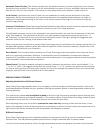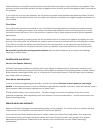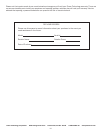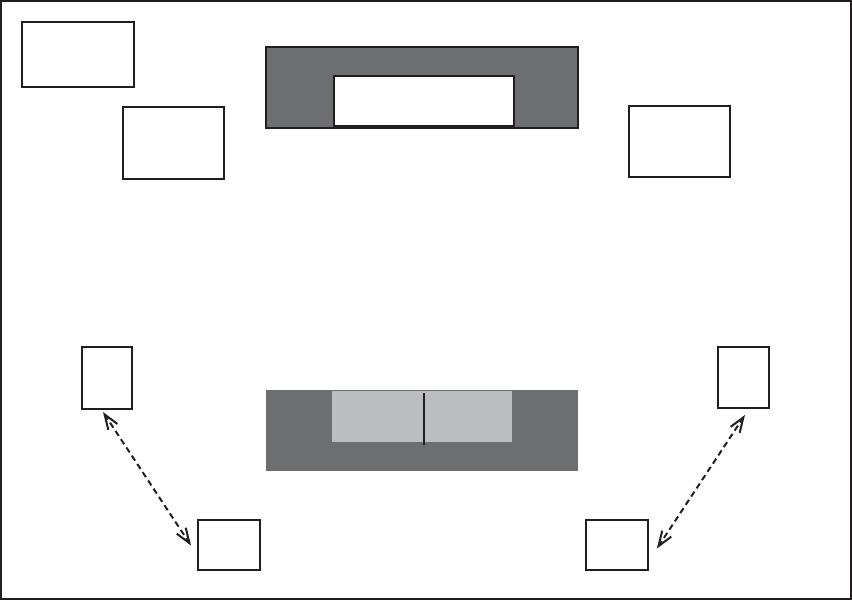
HOME THEATER SPEAKER SYSTEMS
Speaker Placement
Today’s multi-channel home theater technology has elevated the art of “surround sound” to offer the exciting impact
of the movie theater experience in your own home. Speaker requirements and placement are critical to reproduce
these multi-media effects.
Front speakers (left and right), rear speakers (left and right), and a center-channel speaker defi ne the minimum
arrangement for multi-channel systems such as Dolby Pro Logic, DTS, and Dolby Digital (originally known as AC-3).
It is recommended that all of these speakers be from the same company so they are matched in components and
design and therefore as identical as possible in acoustic performance.
For the ultimate in movie sound track impact and realism, a powered subwoofer is also strongly recommended.
Some home theater enthusiasts use two subwoofers for truly impressive, fl oor-shaking effects.
Powered subwoofers are large speakers, often 10-15” in diameter, with built-in power amplifi ers specifi cally designed
to reproduce bass frequencies from the lowest sound octaves. Powered subwoofers also reduce the strain on
your other speakers by suing an electronic crossover network to channel these powerful bass frequencies to the
subwoofer and, thus, away from the front, center-channel and rear speakers.
To position your speakers, there are some general guidelines that take room size, shape, and fi xtures and
furnishings into account. The following diagram illustrates typical speaker placement for surround-sound systems:
Front speakers should be placed far enough apart (at least eight feet) to fully separate the left and right channels
of sound, music, and/or dialogue. Whether fl oor-standing, on speaker stands, or placed on shelves, your speakers
should be at or slightly above ear level.
4
CENTER SPEAKER
RIGHT
FRONT
SPEAKER
LEFT
FRONT
SPEAKER
TELEVISION MONITOR
SUBWOOFER
MAIN LISTENING/VIEWING POSITION
RIGHT REAR
SURROUND
SPEAKER
LEFT REAR
SURROUND
SPEAKER
or
or



